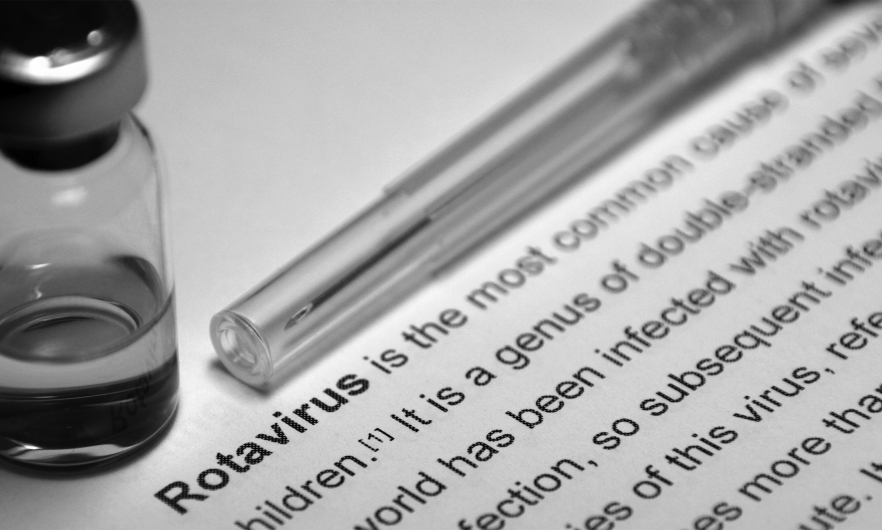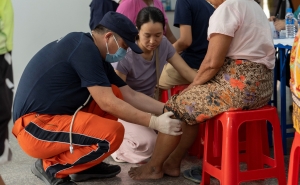Rotavirus the Leading Cause of Diarrheal Deaths Among Children Under 5, New Analysis Finds
Researchers also found that more than 99% of childhood deaths from diarrhea occurred in low- and middle-income countries

A new systematic review conducted by researchers at the Johns Hopkins Bloomberg School of Public Health and the University of Virginia identified rotavirus as the leading cause of death from diarrhea in children under 5 years of age, globally. Using data from 2000 up to 2021, researchers estimated that despite a more than 60 percent decrease from 2000, diarrhea was still responsible for more than 444,000 childhood deaths in 2021—nearly all of which occurred in low- and middle-income countries. The authors conclude that treatment and preventive measures, including sanitation, water access and quality, and coverage with rotavirus vaccine, will need to improve to further reduce the number of diarrhea deaths.
Robert Black, MD, MPH, a professor in the Department of International Health at the Bloomberg School, led the study which was published on April 19 in The Lancet Global Health.
Through a search of various databases, researchers discovered 75,000 relevant papers published between January 1, 2000, and December 31, 2020, that could possibly meet study criteria. Search terms included 12 of the most common pathogens that cause diarrhea: adenovirus 40/41; astrovirus; Campylobacter jejuni or Campylobacter coli; Cryptosporidium sp; norovirus GII; rotavirus; Salmonella sp; sapovirus; Shigella sp; heat-stable, toxin-producing, enterotoxigenic Escherichia coli [ST-ETEC]; typical, enteropathogenic E coli [EPEC]; and Vibrio cholerae.
Of the 75,000, 138 papers from 73 countries met the study criteria, which included:
- Patient population of children under the age of 5 who were hospitalized for diarrhea.
- Tested for at least 2 of 12 pathogens that cause diarrhea.
- Laboratory tests done on rectal swabs or stool samples.
- Study lasted for at least 12 months.
- Peer reviewed.
The researchers found that the 12 pathogens analyzed in the study were responsible for approximately 80 percent of cases of childhood deaths from diarrhea between 2000 and 2021.
About one quarter of childhood diarrheal deaths in LMICs were caused by rotavirus both in 2000 (26.5%) and 2021 (24.4%), but during this period the number of deaths attributable to rotavirus declined by 65.7% globally. Looking at declines in LMICs by WHO region, rotavirus-attributable deaths were estimated to have decreased by around 88% in the European region, 86% in the South-East Asia region, 84% in the Americas, 81% in the Western Pacific, 61% in the Eastern Mediterranean, and 49% in the African region. High rotavirus-vaccine coverage, especially in the Americas, South-East Asia, and European regions, may have contributed to the decline.
In 2000 the second leading cause of diarrheal deaths in LMICs was norovirus GII, but in 2021 Shigella sp rose to the second position, accounting for 8.1% of deaths. In high-income countries, Norovirus GII was the second leading cause both in 2001 and 2021.
Cholera also accounted for a sizable percentage of childhood diarrhea deaths in some regions. South-East Asia had the highest levels at around 5% in 2001 and 3% in 2021. However, researchers acknowledge that cholera deaths are likely undercounted because published studies may have missed cholera outbreaks.
“These findings contribute to understanding the need for general and pathogen-specific diarrhea treatment and preventive measures to eliminate the remaining 444,000 estimated deaths from diarrhea in children under 5,” says Black. “There needs to be a greater focus on the implementation of existing vaccines for rotavirus diarrhea and cholera, as well as on the development of more effective vaccines.”
While the use of current rotavirus and cholera vaccines can continue to significantly reduce deaths, the researchers note that the development of vaccines to protect against the other 10 diarrhea-causing pathogens may be a lower priority given that they would prevent only a small fraction of global childhood deaths from diarrhea.
In addition to improved vaccine coverage and effectiveness, the researchers emphasize the importance of continuing to implement preventative measures that interrupt the fecal-oral transmission of enteropathogens such as water, sanitation and hygiene (WASH) programs, as well as expanding and improving therapeutics to treat diarrheal illnesses.
“Estimated global and regional causes of deaths from diarrhoea in children younger than 5 years during 2000–21: a systematic review and Bayesian multinomial analysis” was written by Robert Black, Jamie Perin, Diana Yeung, Tushara Rajeev, Jacob Miller, Sarah E Elwood, and James A Platts-Mills.
The research was supported by the Bill & Melinda Gates Foundation.





